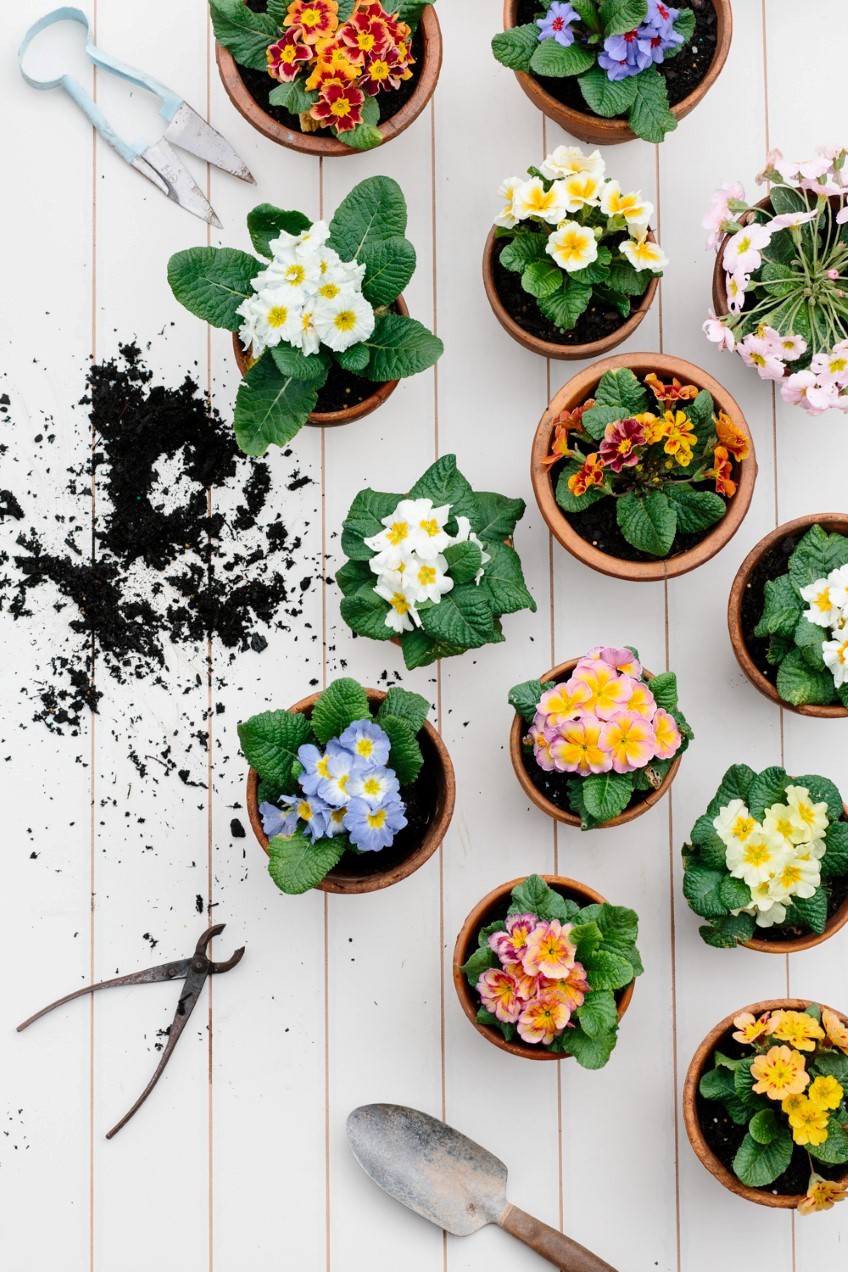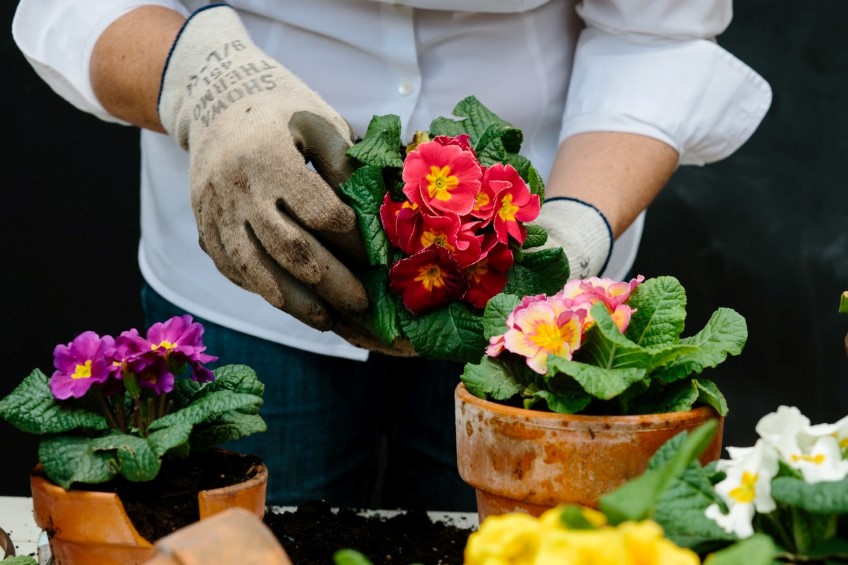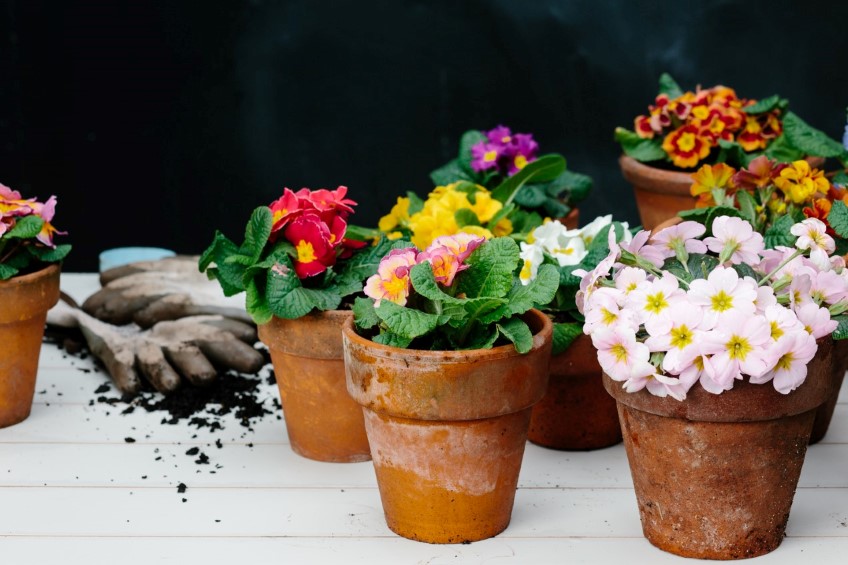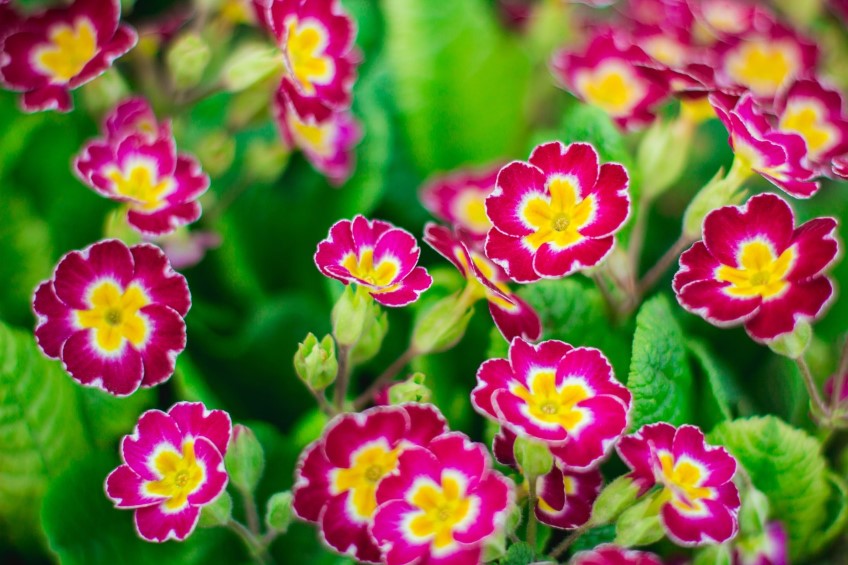Happy to single-handedly bring back Polyanthus, Linda shares her passion for all things retro, pretty and primula. And gets everyone in on the excitement.

All colours of the rainbow. Photo - Luisa Brimble
There's no beating around the bush, primula are old fashioned. They've been cultivated since the 17th century and were much loved by gardeners
in Tudor and Elizabethan times. Taking their name from primaverola – translated from Italian as the first
flower of springtime – they come in a bright rainbow of colours and that's why I love them.
The primula family comes in many shapes and guises, and names! They are known as primroses, cowslip, auricula, primula and polyanthus. They form clumping rosettes
of tidy green leaves and whorls of five-petaled flowers. The polyanthus here come from crossing primroses and cowslips together with
flowers sitting atop a little stem. Every now and again you'll see a special six-petaled flower - and just like a clover - this flower will bring
you luck!
It's time to grab some and get grubby on the potting table!

The Ross family gets messy. Photo - Luisa Brimble
When the weather cools Polyanthus (Primula x polyantha) are usually brushed aside for the showier primula, poppies, pansies or cyclamen, but I
think they deserve top billing. A spot under a deciduous tree is perfect, they like moist soil and full on winter sunshine, just add a little
handful of lime to the soil before planting.
Let’s take a closer look at their flowers – vibrant, warm, sunny, happy colours that make us just want to smile and there’s no shortage of buds, they just
keep flowering. Then there’s their resilience – they’ll take snow, rain, hail, wind and sunshine - in all climates.

Our collection of old terracotta pots are perfect for the job. Photo - Luisa Brimble
Potting up plants is a bit like meditation. Firstly there’s the repetition of filling up each pot with potting mix, upturning each plant, teasing out the
roots and gently nestling it into its new position. Then there’s the practicalities: gloves, hand tools to shovel in the potting mix and a sturdy apron,
of course.
What to do with them? Well, the world is your primula. You can create a colourful spread by cramming them in with other winter flowers such as pansies,
forget-me-knots and English daisies (Bellis perennis) like this…

Too much? Never! Photo - Norma Cornes/Shutterstock.com
Or you can pop them into pots to brighten up your balconies, coffee tables, steps and window boxes. Don’t forget the front door, or even on a bedside
table …

Photo - Luisa Brimble
Or you can hang one up! This coconut-fibre-basket makes the perfect picture, match a few sunshine pansies and variegated Acorus and
hang it from a window, like this…

Happy mix. Photo - Moskwa/Shutterstock.com
Polyanthus is technically a perennial, although it works best as an annual. Flowering through the cooler months from March to September, with domed clusters
of brightly coloured blooms with scalloped petals, they so precious and charming that I just cannot resist their little faces. Golden eyes, white
edged, heart shaped petals, gently overlapping. And the exciting thing is, once flowers are finished, they sleep throughout the summer only to awaken
next autumn for further delight. Ah, another great example of the cycle of life.

White edged petals and yellow centres are trademark features. Photo - Krystofor/Shutterstock.com
Thanks to: Paradise Nursery, Kulnura for the stunning polyanthus.